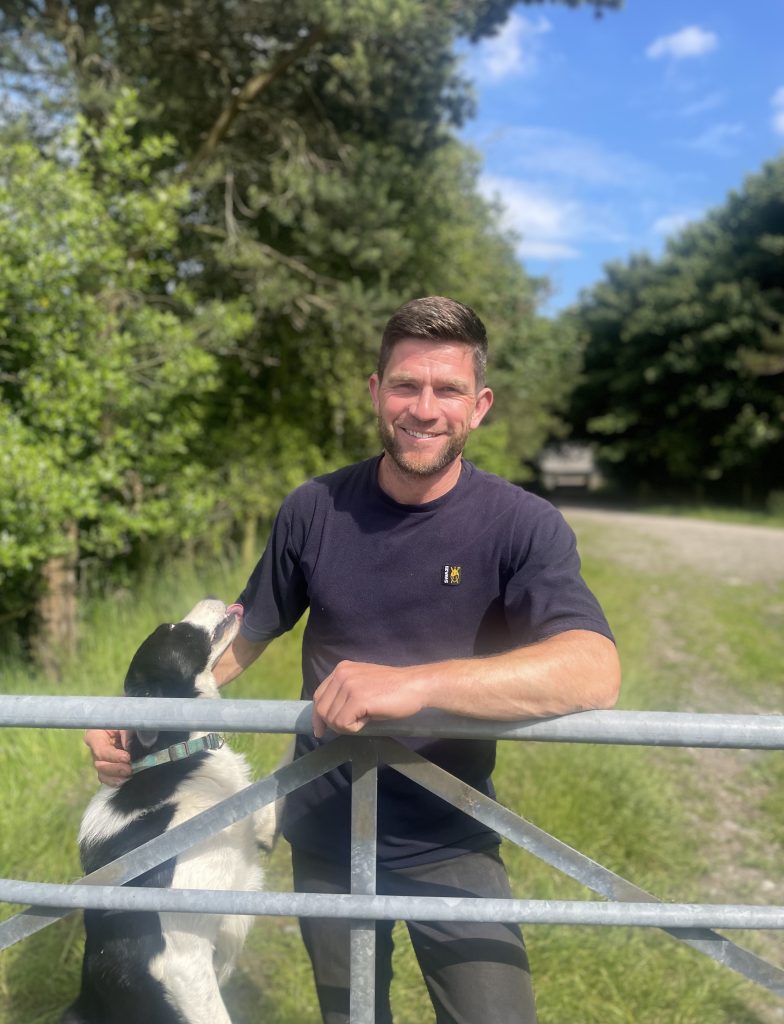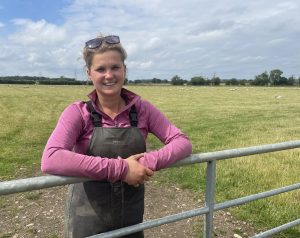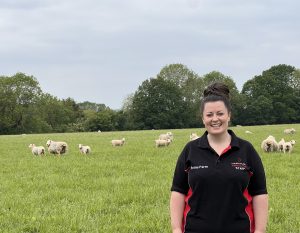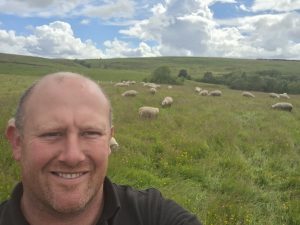with thanks to Richard Wilson, Beckwithshaw, North Yorkshire
Future proofing a flock with strong maternal genetics is the way to go for Richard Wilson who has found his solution in the Aberfield. “We’re currently strengthening our flock by grading up our Texel Mules to pure Aberfield status to put to Texel rams bought in Skipton for finished lamb production,” he explains.
“We’ve currently built to 300 pure Aberfield ewes and I’ve found here is a sheep that can do the job: one that’s got very strong maternal traits which are supported by data. She is a consistent, good strong dam retaining herself in BCS 3 to 3.5 all year round, she is very fertile with a good udder, very capable of lambing outdoors and requiring considerably fewer inputs. We feed them haylage and hay throughout the winter months to supplement the lack of grass and with lick buckets leading up to lambing. Only the ewes scanned with triplets are fed concentrates.
…our Aberfields are multipurpose producing a finished Texel cross lamb to sell either live or deadweight.
“This last season we ran one Aberfield ram with 100 ewes. The ewes scanned 185% and the hoggs 115%, lambing outdoors commenced 10 April and 90% lambed within the first 17 days with minimal intervention. Overall, she is proving to be more efficient, maturing at a slightly lighter weight than our Mules. What’s more, our Aberfields are multipurpose producing a finished Texel cross lamb to sell either live or deadweight.”
The first draft reached 44kg target finishing liveweight at 10-week weaning, following on lambs finished at an average 20 to 22 weeks, while the entire crop was away by Christmas. “While we don’t creep any lambs pre weaning so we can get as many away as possible without incurring extra costs, we do feed concentrate to finish some lambs depending on grass availability between October and December.”
Following a visit to New Zealand and discovering ‘there’s always a different way of doing things’, Richard returned home and agreed to change the traditional sheep enterprise’s direction on the upland unit he farms in partnership with father, David and uncle, Martin based near Beckwithshaw, North Yorkshire.
“We decided to develop a system based on every sheep having to perform, stop creeping the lambs, rely on grass and introduce a portion of the farm to rotational grazing. I wanted to focus more on data and concentrate on maternal traits including lambing percentage and eight-week weights, which are invisible. I’d heard of Innovis and its online platform, I did my research and the rest is history.
“We agreed to reduce our Dalesbred flock which we farmed for four generations, and we stopped breeding Texel Mules because they were becoming too big, and adopted a ruthless culling policy. Going forward every sheep has to pay its way; we can no longer carry passengers.”
I place more and more emphasis on investing in the right rams, last year we bought high index Aberfields and a Highlander to put over the hoggs.
The Wilsons also decided to close the flock with rams being the only bought in sheep. “I place more and more emphasis on investing in the right rams, last year we bought high index Aberfields and a Highlander to put over the hoggs.” Texel cross Aberfield gimmers are also retained for the farm replacements, as well as the pure Aberfields.
He adds: “A ram’s looks continue to be important since I want to be in a position to sell surplus purebred ewe lambs in the ring. However, it’s the performance figures that are now a priority – being informed about what’s under the skin and what level of performance a ram is going to pass on to his progeny. Innovis provides that in depth data along with MV and Borders free guarantees, which gives you a leg up on which way to go.”



